#d&d 1e
Explore tagged Tumblr posts
Text
D&D and Pathfinder RPers tell me what you think.
#pathfinder#pathfinder 2e#pathfinder 1e#pathfinder monsters#dungeons and dragons 3.5#dungeons and dragons 3.0#Dungeons and Dragons 1e#Dungeons and Dragons 2e#Dungeons and Dragons 4e#Dungeons and Dragons 5e#D&D#advanced dungeons and dragons#d&d monster#d&d 5e#d&d 3.5#d&d homebrew#D&D 1e#D&D 2e#D&D 3.0#D&D 4e#hags
5 notes
·
View notes
Note
so how do druids work on ad&d, I know they are a sub class of cleric, but’s that it
Well, like anything in 1st edition, the answer is a simple yes, and also no.

While they are listed as a subclass of cleric, druids are essentially their own class with their own progression table, spells per day, spell lists, and unique abilities—such as a rudimentary wild shape. As well as a level cap of 14.
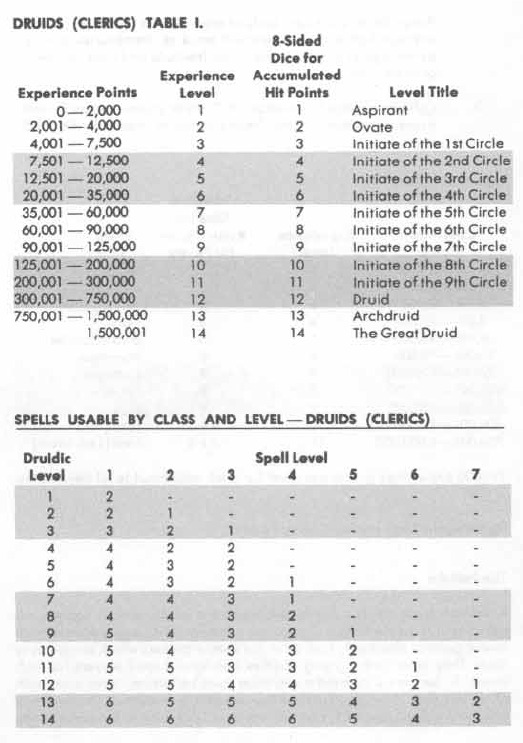
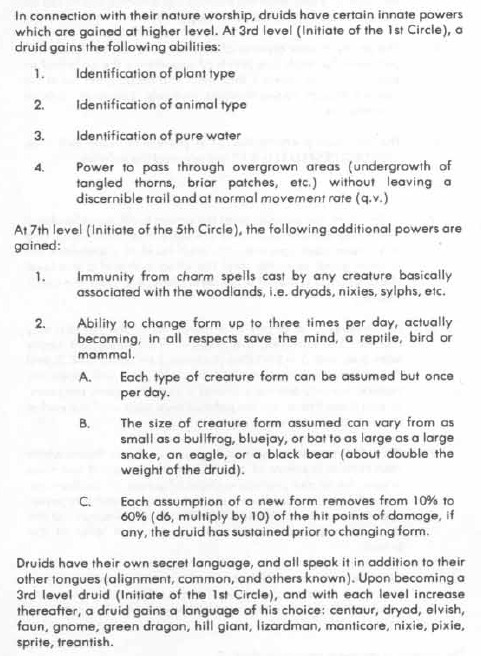
However, they are treated as clerics for the purpose of their attacks and saves because in ye olden days everything was covered with big-ass matrices!
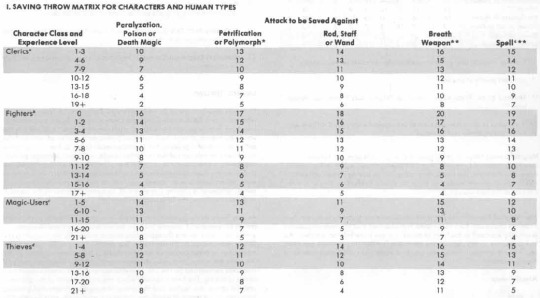
So for the purpose of these tables, it makes sense to minimize the number of actual classes. So technically, there are only four classes, requiring only four entries on the attack and save matrices. But then subclasses expand that to 9 without having to expand the matrices for each new class.
And while this may seem stupid in retrospect—which I mean, fair—it's important to remember that original and basic D&D only had those four classes, with others being added as subclasses in supplements. So the entire game up to this point had been built around that four-class concept.
Although in true D&D fashion, they immediately then go against that, because the monk, originally introduced as a cleric subclass, is now a fifth top-level class and just stated to use the cleric attack matrix and thief save matrix.
However, they did evenutally figure it out, and in 2nd edition just did what 1st edition was basically already doing and put all the classes in four groups instead of grouping them under the four originals.

Then third edition realized that all thsoe matrices were stupid and just used attack and save bonuses—a thing that somehow took 25 years and a change of ownership to figure out—while also kinda losing the groups and actually having listings for all individual classes. Then simplified it even further in 3.5 by just spelling it out as good and poor saves, and good, average, and poor attack progressions.
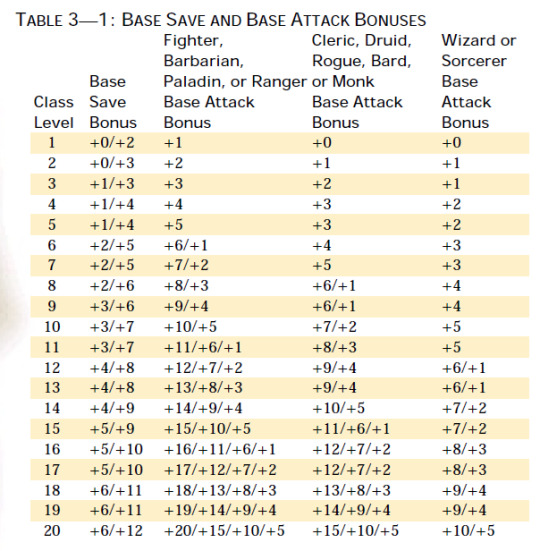
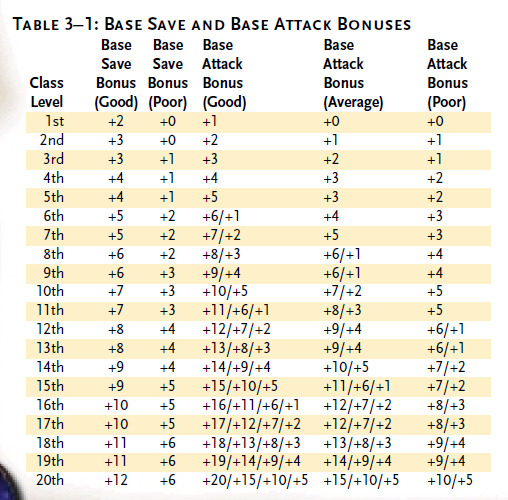
And as long as I'm doing a long-winded thing on early D&D, it's also important to point out that bards were also a class in 1st edition, and were basically a subclass of druid that required taking 5 levels of fighter and 5 levels of thief, as well as having minimum stats of STR 15, Dex 15, Con 10, Int 11, WIS 15, CHA 15. I just like pointing out how absurdly difficult it was to be a bard in 1st edition.
#dungeons and dragons#ad&d#d&d#D&D 1e#first edition#advanced dungeons and dragons#ask response#weird rant
11 notes
·
View notes
Text

My friend's company, Dark Wizard Games, has launched a Kickstarter funding drive for two new D&D adventure modules. These are available for both 1E and 5E -- the cover art above is from the 5E versions. Check it out via THIS LINK.
3 notes
·
View notes
Text
The rules exist to support the story that the DM and the players are collaboratively telling together. All of them.
I am absolutely serious about this.
Now, maybe this was just the group I played with back in the early 80s ...
Sidebar: let it be noted that I was literally a child at the time and the group was my dad (DM and nerd), mom (nerd), and their hard-core nerd friends. They set the bar for RPG groups for me forever and few since have reached it.
... but I'm pretty sure it was broad D&D and AD&D culture back then to just fucking homebrew things when you didn't like a thing in the rules or the rules didn't cover stuff.
My dad wanted a bit more luck in the play so you could recover from a truly bad die roll, so he invented a seventh stat called Luck. He thought elves were wildly overpowered, so he made them in-world cultural outcasts. He saw that low-level magic users were weak as fuck, so he invented elemental affinities that gave them automatic full damage on spells with that element. He let one of the players invent a life-saver deity whose clerics could do heals for max HP BUT the recipient had to do 1 round of fighting only to subdue per HP healed.
I mean, the options were kinda endless then. And yes, a lot of those kinds of homebrew things got folded into later editions or published as supplemental material (Dragon Magazine and these days official-ish books), and some official things got very changed (psionics, I'm looking at you). And yeah, WotC/Hasbro have a vested interest in getting people to buy an infinite amount of official books and stuff.
But the real deep takeaway here should be:
The rules exist to support the story that the DM and the players are collaboratively telling together.
It's often remarked how D&D 5e's play culture has this sort of disinterest bordering on contempt for actually knowing the rules, often even extending to the DM themselves. I've seen a lot of different ideas for why this is, but one reason I rarely see discussed is that actually, a lot of 5e's rules are not meant to be used.
Encumbrance is a great example of this. 5e contains granular weights for all the items that you might have in your inventory, and rules for how much you can carry based on your strength score, and they've set these carry capacities high enough that you should never actually need to think about them. And that's deliberate, the designers have explicitly said that they've set carrying capacity high enough that it shouldn't come up in normal play. So for a starting DM, you see all these weights, you see all the rules for how much people can carry or drag, and you've played Fallout, you know how this works. And then if you try to actually enforce that, you find that it's insanely tedious, and it basically never actually matters, so you drop it.
Foraging is the example of this that bothers me most. There's a whole system for this! A table of foraging DCs, and math for how much food you can find, and how long you can go without food, etc. But the math is set up so that a person with no survival proficiency and a +0 to WIS, in a hostile environment, will still forage enough food to be fine, and the starvation rules are so generous that even a run of bad luck is unlikely to matter. So a DM who actually tries to use these rules will quickly find that they add nothing but bookkeeping. You're rolling a bunch of checks every day of travel for something that is purpose built not to matter. And that's before you add in all the ways to trivialize or circumvent this.
These rules don't exist to be used, that is not their purpose. These rules exist because the designers were scared of the backlash to 4e, and wanted to make sure that the game had all the rules that D&D "should" have. But they didn't actually want these mechanics. They didn't want the bookkeeping, they didn't care about that style of play, but they couldn't just say, "this game isn't about that" for fear of angering traditionalists. And unfortunately the way they handled this was by putting in rules that are bad, that actively fight anyone who wants to use that style of play and act as a trap to people who take the rules in good faith.
And this means that knowing what rules are not supposed to be used is an actual skill 5e DMs develop. Part of being a good 5e DM is being able to tell the real rules that will improve your game from the fake rules that are there to placate angry forum posters. And that's just an awful position to put DMs in (especially new DMs), but it's pretty unsurprising that it creates a certain contempt for knowing the rules as written.
You should have contempt for some of the rules as written. The designers did.
#dungeons and dragons#d&d#d&d 5e#d&d 1e#ad&d#i was there gandalf#yes I really am that old#hopefully nobody who would recognize those homebrew bits is on this site and will know who I am#luck as a character stat was amazing#rolled a 1 when attacking the demigod? appeal to your luck and maybe get a better die roll#but then your luck stat drops for a while#the downside of the elemental affinity was having to be REALLY careful about your target placement because max damage would kill YOU
10K notes
·
View notes
Text

My wife got the cooler find tbh but I did find these old frp Booklets at the half price books
1 note
·
View note
Text

Imperial Dragon Miniature, (The Dragon, Issue 4, 1976)

Was going through some scans of the old editions of Dragon, (back when it was called The Dragon!), and found this cute miniature advertised! Honestly, tragic Archive went out of business in the 80's.
Humorously, Issue #4 was actually mostly about the old TTRPG Empires of the Petal Throne, which takes place in Tékumel, a land without any dragons, unless you count the reptilian people, the Shén, or the mounts of the Dragon Warriors, which have never been confirmed to actually have been dragons, due to the lack of actual records, lore-wise.

#dragon magazine#dragon#miniature#70s#magazine#magazine scan#scans#ttrpg#archive miniature#archival#daily blog#alt text#empires of the petal throne#old ttrpgs#d&d 1e
1 note
·
View note
Text
Wheel of Monsters

Image © @bowelfly
[April Fools! Like previous April Fools' monsters I've done, this is intended to be fully usable at table, just... weird. Most of my previous April Fools monsters have been pop culture references, and this one is, just a little slantwise. The expression "wheel of monsters" has been rattling around my head for years, inspired by game shows and game show parodies like Wheel of the Worst. The monsters its summons pulls from by default are mostly ones on the Codex, but I've included guidelines on how to customize it if you don't want to look up a whole bunch of bespoke stat blocks (assuming, of course, anyone actually uses this abomination at table).]
Wheel of Monsters CR 15 CE Aberration This thing is a quadruped with a long tail and clawed limbs, but its semblance to sane life ends there. Instead of a head, it has a vertically oriented dial with twelve facets, each with a different combination of eyes, teeth and strange glyphs. A single eye sits in the center of the wheel atop the axle. Spikes protrude forward from the edge of the wheel, plucked by a stinger at the end of a long tail. Said tail also has a strange flap on it that has the appearance of a sign, or possibly scoreboard.
The wheel of monsters is a strange tool in the service of the Dominion of the Black. They were invented by the daelkyr Harsanash, whose interests lie in the role that chance events play in increasing entropy and the downfall of complex systems. The wheels of monsters exploit chance by generating random spells and summoning random monsters, drawn from distant worlds under Dominion control or the depths of the Dimension of Dream. These far-flung summons have already had disastrous effects, as now both the quori and beholders know about Golarion and its corner of space, and gaze upon it with envious eyes.
Despite their grotesque appearances, wheels of monsters are quite intelligent—geniuses by the standards of humanoids. They tend to have something of a split personality; obsequious and loyal to higher ranking Dominion creatures, even less powerful ones, but snide and condescending to most other lifeforms. Most wheels of monsters have a fondness for cracking jokes and giving color commentary during combat. All of its many mouths are capable of speech, and it can alter the pattern and coloration on its tail flap with incredible precision in order to spell out words in any language it knows. A common behavior is to speak primarily through one mouth, with an unctuous tone, while making sounds like crowd noises and cheers with its other maws.
A wheel of monsters is usually on the move in combat, stalking from place to place in order to better make use of their spells. They are excellent climbers and have at least the possibility of flight through their random spellcasting, and so prefer to have a birds-eye view of the action in order to better place monsters or effects. A wheel of monsters keeps its tactics flexible, but almost always summons a monstrous minion as soon as it can to engage foes. In melee, they can sting with their plectrum tails, inducing confusion in foes, and grab with their claws. They prefer to split those attacks up, stinging enemies to disrupt their tactics and then focusing the bulk of their violence on a single target. If a wheel of monsters has a foe grabbed, it lowers its spiked face on top of their victim and spin it, tearing with all of its spikes and teeth simultaneously. When fighting on their own terms, wheels of monsters will gladly flee a losing fight, but gladly sacrifice their lives in order to promote the objectives of their superiors.
Appropriately enough for a creature of weaponized chance, different wheels of monsters may be able to call forth different spells or summons by spinning their wheels. In order to adjust the wheel of monsters’ spellcasting spin, replace some or all of the spells with spells of the appropriate level. A wheel of monsters can call upon two spells of each level from 1st to 6th. In order to adjust the wheel of monsters’ summoning spin, replace some or all of the monsters with monsters of the appropriate challenge rating. A wheel of monsters can summon two monsters of each CR between 8 and 13.
Wheel of Monsters CR 15 XP 51,200 CE Large aberration Init +8; Senses darkvision 60 ft., low-light vision, Perception +27
Defense AC 29, touch 17, flat-footed 24 (-1 size, +4 Dex, +1 dodge, +3 luck, +13 natural) hp 225 (18d8+144) Fort +17, Ref +16, Will +16 Immune curses, disease, poison Defensive Abilities fortune’s favor
Offense Speed 40 ft., climb 30 ft. Melee 2 claws +19 (1d8+7 plus grab), sting +19 (2d6+7 plus confusion) Space 10 ft.; Reach 5 ft. (10 ft. with sting) Special Attacks rake (bite, 4d8+7), spellcasting spin, summoning spin
Statistics Str 24, Dex 19, Con 27, Int 20, Wis 14, Cha 21 Base Atk +13; CMB +21 (+25 grapple); CMD 36 (40 vs. trip) Feats Combat Expertise, Combat Reflexes, Dodge, Improved Initiative, Lightning Reflexes, Mobility, Nimble Moves, Spring Attack, Whirlwind Attack Skills Acrobatics +25 (+29 jumping), Bluff +17, Climb +30, Fly +11, Intimidate +20, Knowledge (arcana, planes) +23, Knowledge (dungeoneering) +26, Perception +27, Spellcraft +20, Stealth +18; Racial Modifiers +4 Perception Languages Abyssal, Aklo, Common, Protean, Undercommon, telepathy 100 ft. SQ no breath
Ecology Environment any land or underground Organization solitary Treasure standard
Special Abilities Confusion (Su) A creature stung by a wheel of monsters must succeed a DC 24 Will save or be confused, as per the spell, for 1 minute. If the confused creature gets the “act normally” result two turns in a row, the effect ends early. This is a mind-influencing compulsion effect, and the save DC is Charisma based. Fortune’s Favor (Su) A wheel of monsters has a +3 luck bonus to its AC and to its saving throws. Spellcasting Spin (Su) At will as a standard action, a wheel of monsters can spin its wheel to cast a random spell. These function as the spell cast at CL 15th, except that it does not provoke attacks of opportunity and the save DC for all of these abilities, if applicable, is DC 24. The save DC is Charisma based. The wheel of monsters can choose the target or area of the spell as normal for any legal target after determining the spell cast. Roll a d12 to determine the spell cast each time the wheel of monsters uses this ability 1. magic missile 2. mage armor 3. blur 4. scorching ray 5. fly 6. lightning bolt (Reflex half) 7. enervation 8. fire shield 9. cone of cold (Reflex half) 10. spell resistance 11. disintegrate (Fortitude partial) 12. globe of invulnerability Summoning Spin (Su) As a standard action, a wheel of monsters may spin its wheel to summon a random monster from the following table. Monsters summoned in this fashion appear within 60 feet of the wheel of monsters and remain for 15 minutes or until dismissed. A wheel of monsters can use this ability as many times per day as 3 + its Charisma modifier (8/day for an average specimen), but can have no more than one monster summoned at a time through this method. Roll a d12 to determine the monster summoned each time the wheel of monsters uses this ability: 1. animate dream 2. neh-thalggu 3. aros 4. quori, hashalaq 5. rukanyr 6. yad-pollom 7. p’nahki 8. quori, du’ulora 9. garsonite 10. gogiteth 11. beholder 12. ectodactyl
#pathfinder 1e#pathfinder rpg#d&d#april fools#wheel of monsters#aberration#dominion of the black#original art#bowelfly#who knocked it out of the park with this one
320 notes
·
View notes
Text
Why did they ban you for that? Tomb of Horrors, a classic D&D adventure written by Gygax himself (so you know it's OG D&D) contained a gender bender trap. I looked it up to make sure I was right about this, and I am! Temple of Horros room 14B:
"B: Archway of Glowing Orange: As already stated, the skeleton on the floor of the chapel room is outstretched and pointing to the arch. (Show your players GRAPHIC *5, and explain that none of the stones of the arch glow, but that the entranceway is filled with luminous orange vapors of an exciting hue.) These vivid orange mists cannot be penetrated with any sort of vision or magic. The skeleton, of course, misleads the party, for any character passing through the portal will enter a 10' x 10' room where their sex and alignment are reversed by a terrible curse. (Although restoration of alignment and sex to original is difficult, the curse once reversed will not alter paladinhood, ranger status, etc.) Re-entering the archway will restore original alignment, but 1-6 hit points of damage will be sustained in so doing. Going back a 3rd time will reverse sex again, but the individual will be teleported as arch 10. A. does. Only a wish or alter reality spell will restore both alignment and sex. However, if alignment is restored by entering the orange portal, a remove curse spell will then restore original sex. Prior to alignment restoration, no spells other than the those stated will affect the cursed character."
-Tomb of Horrors (1e) page 5
Gender tf is literally OG D&D shit.
shoutout to when i got banned from being a dungeon master at age 15 because i kept putting gender tf traps in my dungeons and nobody could figure out why, including myself
28K notes
·
View notes
Text
These are available in August!
#stamp collecting#stamps#usps#ad&d 1e#dungeons and dragons#ttrpg#d&d#old school renaissance#osr#ad&d#dnd5e#dnd#dnd1e#d&d 5th edition#d&d 5e#collectibles#d&d art#dnd art
601 notes
·
View notes
Text
Yeah this isn't part of the tournament this is just for my sake. IMPROMPTU BATTLE FOR MOST SEXY ORC
5e Gray
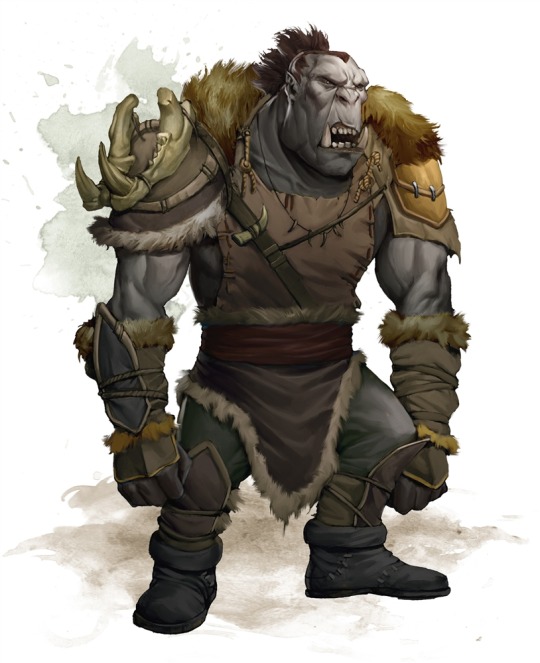
5e PC

5e Claw of Luthic

4e
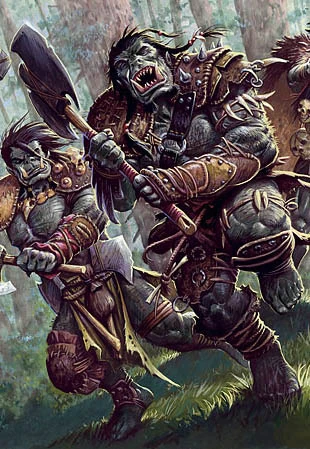
3e

2e
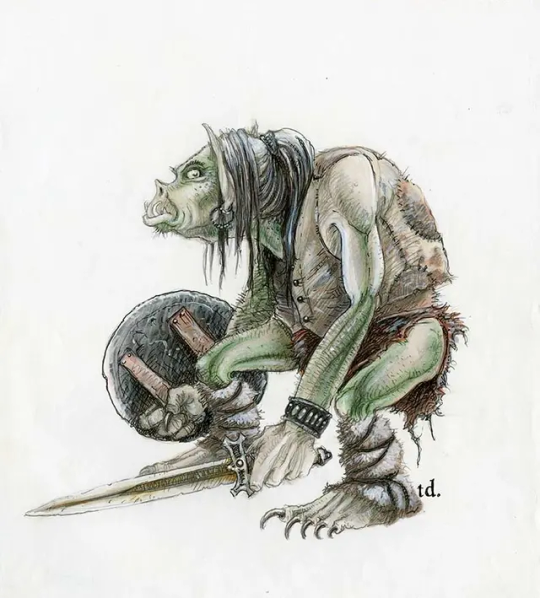
1e
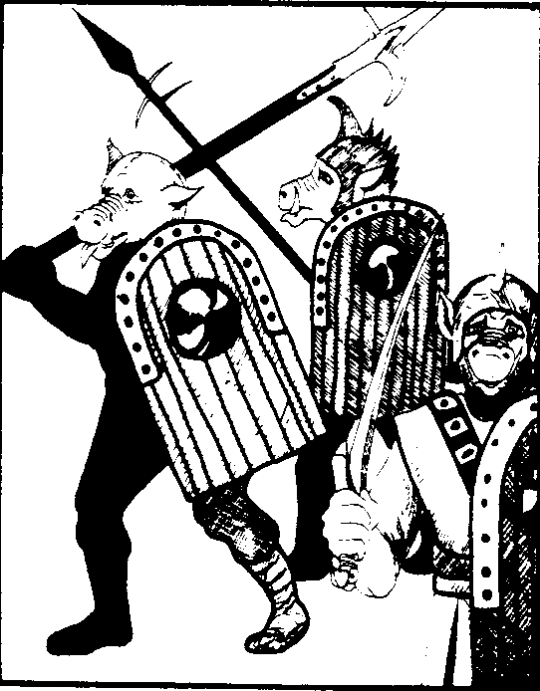
191 notes
·
View notes
Text

Monkey watches as wizard conjures a banana peel to trip a barbarian
Art for Player's Handbook 1e
Art byDavid C. Sutherland III
15 notes
·
View notes
Photo
Actual stats (using D&D 1e — i.e., the boxed sets), from the module Quest for the Heartstone:
ZARAK™ Evil Half-Orc Assassin* Chaotic Cutpuse (5th level thief)
Strength 13 (+0 melee attack and damage) Intelligence 11 (+2 languages) Wisdom 15 (+1 to certain saving throws) Dexterity 12 (+0 to Initiative, ranged attacks, and AC) Constitution 16 (+2 hit points per hit die) Charisma 6 (-15% loyalty, -10% reactions)
Armor Class 7 Hit Points 27 (5d6+10)
Weapons: throwing dagger +1 with magical returning (boomerang) ability Armor: leather; potion of invisibility

Zarak - Advanced Dungeons and Dragons (LJN)
#Quest for the Heartstone#The * means they're part of the toyline#Which is kinda a given for this post#D&D 1e#Not even AD&D#Before that
518 notes
·
View notes
Text




Do you love tieflings but have a hard time designing them? Look no further! I created 4 tiefling character adoptables, classes taken from DnD 5e and Pathfinder 1e!
🌌 Each Adoptable is 50 USD 🌌
🌌 For 115 USD you receive the chibi ref + a bonus full body piece! 🌌
🌌 You can purchase a tiefling over at my Ko-Fi shop!
Monk: Claimed
Barbarian: Available
Inquisitor: Claimed
Kineticist: Available
#adopt#adoptable#tiefling#dnd#pathfinder#dnd art#dnd adoptables#pathfinder 1e#monk#barbarian#inquisitor#kinecisist#boost#who's your fav? :D#yes the barbarian is a buff trans guy <3
57 notes
·
View notes
Text
3.5 to PF1e Conversion: Waterveiled Assassin
Welcome back! This is a conversion I've honestly been eager to do someday.
Back in the good old 3.5 days, there was this evil god, Tharizdun, who was basically like a previous version of Rovagug, in that it just wanted to wreck everything and had suckered the four evil Archomentals (Ogremoch, Yan-C-Bin, Imix and Olhydra) into working for his agenda. Each evil Archomental had some favored avatars for carrying out their will, which were appropriately called Avatars of Elemental Evil.
Since I liked those creatures well enough, and I thought they can easily be incorporated in the Golarion setting with only a few changes... I'd like to try my hand at converting them, starting with the Waterveiled Assassin. Enjoy, and please let me know what you think and where I can improve!
WATERVEILED ASSASSIN

Image (c) Wizards of the Coast, from Monster Manual IV, author Daarken
Before you stands a monstrous, vaguely serpentine shape made of water, with hateful eyes and a mouth turned into a wicked sneer barely visible in what passes for its face.
WATERVEILED ASSASSIN CR 15
XP 51’200
NE Large Outsider (elemental, evil, extraplanar, water)
Init +12; Senses darkvision 60 ft., Perception +22
DEFENSE
AC 28, touch 17, flat-footed 20 (+8 Dex, +11 natural, -1 size)
hp 225 (18d10+126); fast healing 5
Fort +18, Ref +19, Will +12
Damage Reduction 10 / -; Immune elemental traits
OFFENSE
Speed 30 ft., swim 60 ft.
Melee 2 slams +25 (4d8+8 plus grab)
Space 10 ft.; Reach 20 ft.
Special Attacks churn, drench, engulf (DC 27, 4d8+12), grab, water mastery
STATISTICS
Str 26, Dex 27, Con 24, Int 10, Wis 19, Cha 15
Base Atk +18; CMB +27 (+31 grab); CMD 45
Feats Cleave, Combat Reflexes, Engulf Revulsion, Great Cleave, Improved Initiative, Iron Will, Lunge, Power Attack, Skill Focus (Stealth), Vital Strike
Skills Acrobatics +22, Bluff +16, Intimidate +16, Knowledge (planes) +16, Perception +22, Sense Motive +20, Stealth +32, Swim +36
Languages Aquan
Special Qualities liquid body, malleable form, one with water
ECOLOGY
Environment any (Elemental Plane of Water)
Organization solitary
Treasure standard
SPECIAL ABILITIES
Churn (Ex): As a swift action, a waterveiled assassin can batter opponents it has engulfed with mighty currents that it creates by controlling its own shape. All creatures currently engulfed within the waterveiled assassin’s body take 4d8+12 points of bludgeoning damage as the currents try to tear their bodies apart. A successful Fortitude saving throw (DC 27) halves the damage taken. The save DC is Strength-based.
Drench (Ex): The waterveiled assassin's touch puts out nonmagical flames of Large size or smaller. The creature can dispel magical fire it touches as dispel magic (caster level 15th).
Liquid Body (Ex): A waterveiled assassin exercises supreme control over its watery form, allowing it to flow around attacks, flatten itself against the ground to avoid a spell’s blast, and so forth. Any effect or spell that allows a Reflex save for half damage has a 50% chance to have no effect on a waterveiled assassin. Even if it is affected, the waterveiled assassin can still attempt a saving throw against the spell’s effect as normal. This ability also gives the waterveiled assassin a greater reach on its melee attacks, effectively increasing its natural reach to 20 ft.
Malleable Form (Ex): A waterveiled assassin’s control overits form allows it to flow through tiny cracks in objectsand move through the earth, walls, and other obstacles.The assassin moves at normal speed through terrainthat slows movement. It can move through permeable objects at half speed, but it cannot move through completely solid barriers, such as those produced by a wall of stone or wall of force spell.
If a waterveiled assassin ends its movement completely within an object, opponents do not have line of sight or line of effect to it. Its reach drops to 0 feet. Any creatures engulfed within the assassin automatically break free of the grapple and fall prone in a square adjacent to the object. If only part of the assassin is in an object, but its remaining space cannot hold all the creatures within it, the assassin may choose which ones to release.
One With Water (Ex): A waterveiled assassin that is completely immersed in a volume of water that’s at least 15 ft. wide, 15 ft. long and 15 ft. deep is effectively invisible, as per the greater invisibility spell.
Water Mastery (Ex): A waterveiled assassin gains a +1 bonus on attack and melee damage rolls if both it and its opponent are touching water. If the opponent or the waterveiled assassin is touching the ground, the assassin takes a –4 penalty on attack and melee damage rolls. These modifiers also apply to bull rush and overrun maneuvers, whether the assassin is initiating or resisting these kinds of attacks.
A waterveiled assassin is a creature of living water sent by Kelizandri, the evil Elemental Lord of Water, to slay his cult’s enemies. This deadly killer can flow through the smallest cracks to ambush and engulf foes, and its fluid form and mastery of water lets it strike at opponents from unexpected angles.
The waterveiled assassin is a canny hunter, making use of terrain advantage and of all their special abilities to surprise foes and dispatch them quickly. A waterveiled assassin has no use for a fair fight; it usually approaches its target in open water, taking advantage of its invisibility, or hides within a wall or a large non-waterproof object that can contain its bulk. When its target closes, the waterveiled assassin surges forth, rolling over its foe and trying to drown him or batter him to death in its liquid body. A waterveiled assassin usually focuses on the least armored foes, knowing they are more likely to be arcane spellcasters or to have dangerous abilities, and drags them off to an isolated spot for the kill.
If a waterveiled assassin has a weakness, it is overconfidence – an assassin might leap on a party’s wizard or sorcerer while disregarding physically capable combatants, and giving them the chance to heap severe punishment upon the elemental.
A waterveiled assassin’s form is unstable, but it usually stands about 12 feet tall and weighs 1'000 pounds.
#conversion#d&d 3.5#pathfinder 1e#elemental#outsider#dungeons and dragons#waterveiled#assassin#tharizdun
22 notes
·
View notes
Text
every time a ttrpg has an exquisite text block about how cool and ability is and then the mechanics are just "make a single attack with +1 non-stacking-with-anything bonus to damage, but only if you stand in like, dim light. Not darkness, though, just dim light." or something I kind of want to grab a designer by the ankle and recreate that one scene with Hulk and Loki. Stop it, stop making me sift through these, I don't care "older editions of the game were way worse about this kind of thing!" or "It's really good in specific campaigns!" I am so tired of sifting through situational bullshit that has to compete directly against "thing that makes your class actually function"
24 notes
·
View notes
Text
Enjoying this conversation.
The trick to understanding tabletop RPGs which pride themselves on simulating reality rather than emulating genre tropes is that their designers' notion of "realism" is typically informed by popular fiction which bills itself as "realistic" – which is, itself, a genre with a discernible body of tropes.
#ttrpg community#ttrpg#d&d 5e#dnd 5e#dnd 5th edition#gurps#realism#tabletop roleplaying#tabletop rpgs#bruce lee#martial arts#rpgs#running an rpg#rpg#d&d 1e#dnd 1e#dungeons and dragons#ad&d 1e#d&d#osr#gaming#game design#old school renaissance
2K notes
·
View notes